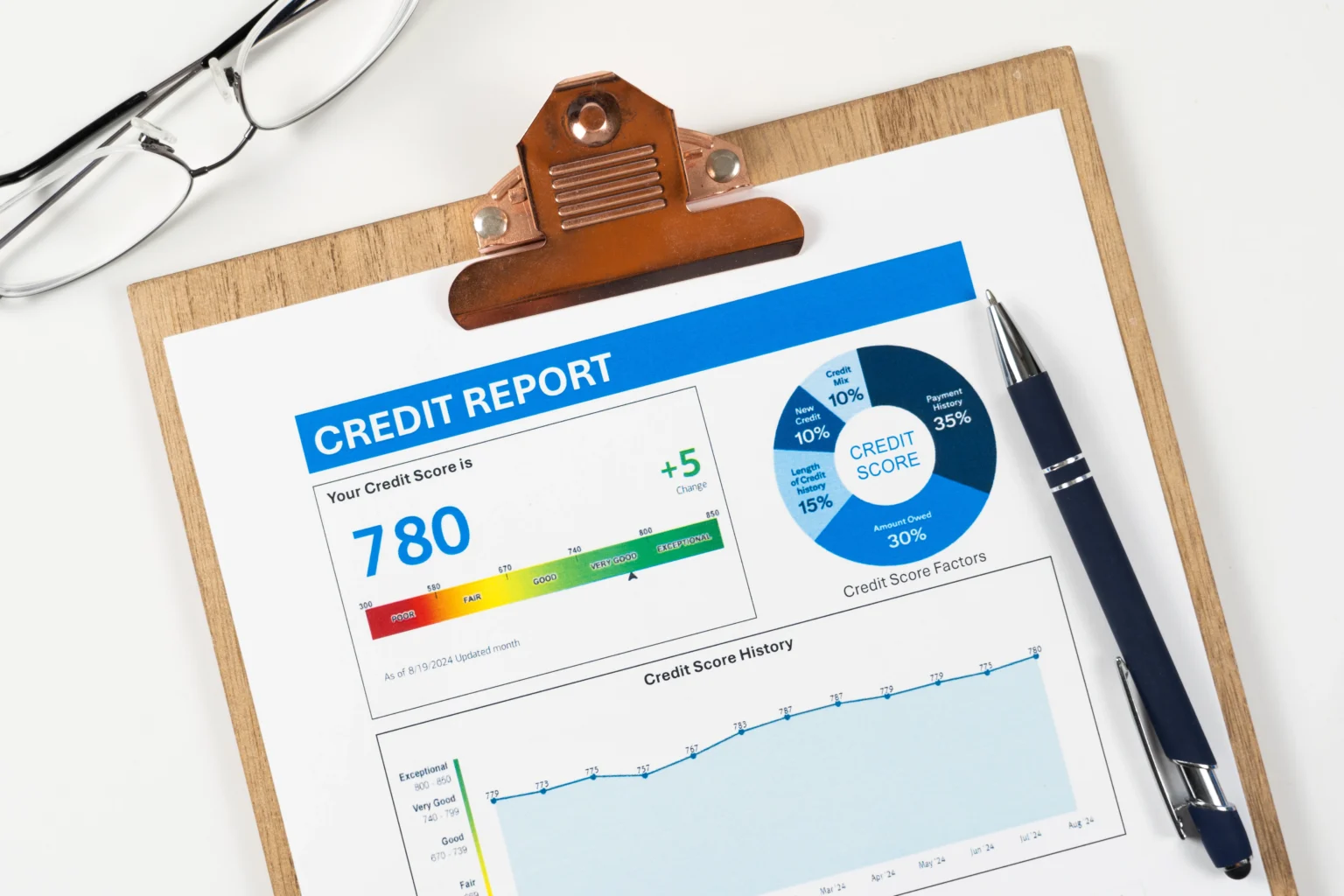Picture this: two neighbors walk into the same bank looking for a $400,000 mortgage. Neighbor A’s credit score is 805; Neighbor B’s sits at 690. Over a standard 30-year term, B will pay about $40,000 more in interest—roughly the price of a brand-new car—simply because a few three-digit numbers told the lender, “This person’s riskier.” That difference is silent, hidden, and totally avoidable.
Here’s the hard truth: your credit report is the résumé lenders read before they “hire” you for a loan. They don’t care how nice you are or how steady your job feels; they care about the data—on-time payments, utilization, age of accounts, inquiries. If you’re not watching that data, tiny errors or a single missed payment can snowball into five-figure costs without you noticing.
Promise: In the next few minutes you’ll learn an auto-pilot system to:
Catch identity theft before it drains your score.
Spot score dips early—while they’re still cheap to fix.
Keep borrowing costs rock-bottom so more of your cash works for you, not the bank.
Let’s make sure your invisible résumé never sabotages your financial freedom.
Why Credit Monitoring Is Non-Negotiable

- It’s your financial first impression (and people are judging).
Lenders, landlords, insurers, even some employers run your credit file before they say yes. A great score can drop your mortgage rate by ~0.5 percentage points—saving tens of thousands over the loan’s life—while a mediocre one quietly inflates every payment you make. - Every point is real money.
A 20-point bump from 720 to 740 can slash a 5-year auto-loan rate by ~1 percentage point. On a $35 k car, that’s $900-$1,200 back in your pocket. Monitor → tweak → profit. - It’s the earliest alarm for identity theft.
Fraudsters open cards, skip payments, tank your score—often before you get a single phone call. Regular alerts catch the first suspicious inquiry so you can freeze, dispute, and shut it down fast. - Errors are shockingly common (and expensive).
Roughly 1 in 5 credit reports contain mistakes big enough to hurt your score. ¹ A misreported late payment or duplicated debt can knock off 50-100 points overnight unless you spot and dispute it. - Your score powers your leverage.
Planning to house-hack, refinance student loans, or snag a business line of credit? Higher scores equal bigger approvals and lower collateral requirements—meaning you keep more cash free for investments.
Bottom line: If wealth is built on the cost of capital, then credit monitoring is the smoke detector that keeps your financial house from burning down. Set it, automate it, and sleep easier knowing you’ll never be blindsided by a three-digit surprise.
The 3 × 3 Credit-Monitoring Framework

You don’t need a dozen apps or another complicated dashboard. Stick to three touch-points, three timespans, and you’ll catch 99 % of issues before they cost you a dime.
When | What to Check | How (Free or Cheap) | Why It Pays Off |
Weekly | Transaction & fraud alerts | Card issuer push/email alerts | Spot sketchy charges quickly; freeze cards |
Monthly | Score & factor shifts | Credit Karma / NerdWallet / bank FICO widget | See utilization spikes or new inquiries early |
Every 4 Months | Full bureau file | AnnualCreditReport.com (rotate bureaus) | Dispute errors long before major loan applications |
How to put this on autopilot (takes < 10 min):
Set device alerts once per card and forget it—fraud pings land instantly.
Install one free score-tracking app and enable “score change” notifications.
Create three calendar events labeled “Full Report Day” (Jan 2, May 2, Sept 2). Attach the AnnualCreditReport.com link so Future-You doesn’t hunt for it.
After each pull, freeze that bureau (free in their app). Your file stays locked until you unfreeze for legitimate credit checks.
Mental win: Treat the weekly and monthly pings like closing your exercise rings on an Apple Watch—keep the “fraud-free” streak alive, and your score naturally trends up while costs trend down. Five minutes of monitoring beats thirty years of overpaying the bank.
Automate & Gamify Your Credit Guard

Stop relying on willpower—set up guardrails that work 24/7 so you can focus on living, not lurking in dashboards. Here’s the four-step automation stack and a few gamification tricks to keep you motivated.
Step | One-Time Action (≈3 min each) | Daily/Weekly Benefit |
1. Score-Change Alerts | Enable score-change notifications in bank FICO widget or Credit Karma/NerdWallet | Immediate alert to balance spikes, inquiries, or payment posts |
2. Autopay + Mid-Cycle “Micro-Pay” | Turn on full-balance autopay; schedule a small mid-cycle payment | Avoid late fees; maintain low utilization snapshot |
3. Permanent Credit Freezes | Freeze credit in Experian, Equifax, TransUnion apps; add thaw shortcuts | Block identity thieves; thaw quickly for legitimate pulls |
4. Quarterly Bureau Rotation | Set calendar reminders: Jan–Experian, Apr–Equifax, Jul–TransUnion, Oct–Experian | Regularly sweep full reports without confusion |
Gamify It Like a Fitness Tracker
Credit-Utilization “Ring.”
Use card-issuer widgets that show a progress bar—aim to keep it under 10 %.
Treat a green bar as “ring closed” for the month.
Streaks & Badges.
Many apps (Experian, Credit Karma) award badges for consecutive on-time payments or zero-inquiry months. Let those digital trophies scratch the dopamine itch.
Level-Up Challenges.
Challenge yourself to shave 5 % off utilization or boost the average account age badge by leaving older cards open. Post your “level-up” in a money-accountability group.
Boss Fight Alerts.
Name your score-drop notification “Boss Fight!”—when it pops, you tackle the issue within 24 hours. Turning a chore into a quest keeps response times lightning-fast.
Bottom line: Automation eliminates forgotten due dates; gamification keeps you engaged enough to notice the rare red flag. Set it once, earn points forever—and let every lender’s algorithm see you as a high-score player.
Fix What You Find: The 30-Day Dispute Blueprint

1. Screen-Grab the Error
- Snap a screenshot of the incorrect item in every report or app you see it.
- Tools: phone snip tool, desktop screenshot.
- Why: Locks in a time-stamped record before it “magically” changes.
2. Gather Proof
- Collect payment receipts, bank statements, payoff letters, or a police report (for ID theft).
- Tools: online banking portal, creditor chat logs.
- Why: Federal law forces bureaus to review the evidence you provide—not guess.
3. Draft a One-Page Letter
- State who you are, what’s wrong, why it’s wrong, and list every piece of proof.
- Keep it plain English; avoid legal jargon.
- Why: Clear, specific asks speed the investigation.
4. Send Certified Mail + Online Upload
Mail each bureau and upload the same packet in its online dispute portal.
Tools: USPS Certified Mail, Experian/Equifax/TransUnion dispute pages.
Why: Certified “green card” gives you a legal timestamp; online upload creates an instant digital trail.
5. Set a 30-Day Timer
Create a calendar alert the moment you drop the letter: “Bureau must reply by <DATE>.”
Why: Keeps you from letting their deadline slip by unnoticed.
6. Review the Response
- If the item is corrected—celebrate.
- If it isn’t, escalate to the original creditor (furnisher) and file a complaint at CFPB.gov.
- Why: A CFPB case number turns “please fix this” into “federal file in progress.
7. Rinse & Repeat Until Clean
- Re-dispute any partial fixes or ignored issues.
- Use the same letter, adding “This is a follow-up dispute” in bold.
- Why: Persistence plus documentation beats bureaucracy almost every time.
Certified-Mail Addresses
Experian: P.O. Box 4500, Allen, TX 75013
Equifax: P.O. Box 740256, Atlanta, GA 30374-0256
TransUnion: P.O. Box 2000, Chester, PA 19016-2000
(Include a copy of your driver’s license and a recent utility bill to verify identity.)
Pro Tips for a Fortress-Level Credit Score

1. Piggyback on a Seasoned Tradeline
What it is: Become an authorized user on a trusted friend’s or family member’s card that’s 5 + years old with perfect payment history and low utilization.
Why it works: Their on-time history and long account age slide onto your report, often boosting your score within 30 days.
Action: Ask them to keep the card in their possession (you never need to touch it). Remove yourself once your own accounts carry enough weight.
2. Request Higher Limits—Twice a Year
Why: Raising your limit drops your utilization ratio, the second-heaviest FICO factor (30 %).
How:
Log in to each card portal.
Look for “Request credit-line increase” (most issuers do a soft pull).
Ask during high-income months or after a big score bump for best odds.
Pro move: Stack approvals across multiple cards in the same week—your utilization drops everywhere before any new hard pulls post.
3. Master the Mid-Cycle “Statement Hack”
Problem: FICO snapshots your balance on the statement-closing date, not the due date.
Solution: Pay your card down to < 10 % of its limit 3 days before the statement closes. You still get the float, but bureaus see a low balance.
Set-and-forget: Automate a calendar ping named “Micro-Pay” on each card’s closing date.
4. Never Close Your Eldest Card
Length of credit history = 15 % of your score. Cutting the oldest line can shave 20-40 points overnight.
Instead:
Downgrade high-fee cards to no-fee versions.
Toss them in a drawer or auto-pay one small subscription to keep them active.
5. Diversify with an Installment “Builder” Loan
Mix of credit (10 %) bumps scores.
Open a credit-builder loan through a local credit union or online fintech (Self, SeedFi).
Payments sit in a locked savings account; when the term ends, you get the cash back—minus small fees—but your report now shows flawless installment history.
6. Time Hard Inquiries Like a Chess Player
Multiple mortgage or auto-loan pulls inside a 14-day “shopping window” count as one inquiry.
Batch all rate quotes inside one week.
Avoid any other hard pulls for 90 days before a big application (e.g., home purchase) to keep your file pristine.
7. Leverage “Goodwill” and “Pay-for-Delete” Letters
One accidental late payment? Politely request a goodwill adjustment after you’ve caught up.
Collections showing? Negotiate a pay-for-delete agreement in writing before sending money. Success rate is higher than most people think—and it can erase a multiyear penalty.
Key Takeaway: A fortress score isn’t magic; it’s stacking small levers—age, utilization, payment history, mix, and inquiries—in your favor. Implement even two of these tactics this week, and you’ll feel the score momentum long before your next loan officer runs the numbers.
Call to Action

Your marching orders: lock this in before the day’s over. The difference between “I’ll get to it” and “done” can be 20 years of unnecessary interest.
Schedule Your First Bureau Pull (2 minutes)
Open your calendar—right now—set a recurring event: “Pull Experian report” one month from today.
Add the link
AnnualCreditReport.comin the description so Future-You has zero friction.
Activate Score-Change Alerts (3 minutes)
Log in to your primary bank or Credit Karma, toggle “Alert me for any score change ≥ 3 points.”
Confirmation email = proof it’s live.
Freeze All Three Bureaus (5 minutes total)
Experian → Equifax → TransUnion apps: tap Freeze.
Save each thaw PIN in your password manager under a “Credit Sentinel” folder.
Create a Mid-Cycle Micro-Pay Automation (4 minutes)
Inside online bill-pay: set every card to auto-pay the statement balance on due date.
Add a second rule: $25 payment three days before statement close. Utilization hack, on autopilot.
Share One Quick Win Publicly (30 seconds)
Tweet, post, or drop in a group chat: “Just froze all three credit bureaus in under 10 min—feels like putting a vault door on my wallet.”
Social proof amps motivation and keeps you on the hook.
Challenge: Beat the 15-Minute Timer
Set a stopwatch and race through steps 1-4.
Remember: credit mistakes compound like bad debt; vigilance compounds like wealth. Set your Credit Sentinel today, and let banks compete for the privilege of lending to you tomorrow.
Let Your Credit Work While You Sleep
Keeping your credit report pristine isn’t just about bragging rights—it’s a silent profit center. A healthy score slashes borrowing costs, widens opportunity, and shields you from fraud-driven setbacks. By automating alerts, freezing your files, rotating full pulls, and acting fast on errors, you turn credit monitoring from an annual chore into a daily advantage.
Remember: wealth compounds fastest when your cost of money is near zero. Follow the Credit Sentinel system, lock in a fortress-level score, and every future loan officer will fight to give you their lowest rate. Your finances—and your peace of mind—deserve nothing less.









